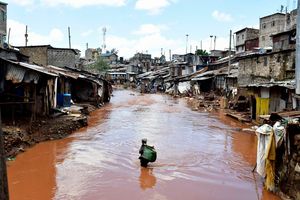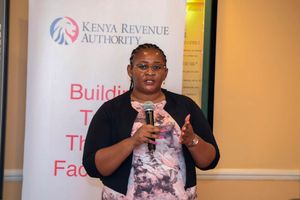Queries as KPC fails to abandon old line for Sh48bn channel
What you need to know:
KPC has advertised tenders to replace 15km of Line 1 — months after it commissioned the use of Line 5.
The company said the 15km stretch will be replaced in the repairs, whose cost, although not disclosed, will run into hundreds of millions of shillings.
The tendering process has already begun after a Dutch consultant examined the old line and identified the corroded sections in need of replacement.
After spending Sh48 billion in a kickback-driven pipeline project from Nairobi to Mombasa, Kenya Pipeline Company is pondering what to do with the old line (Line 1) on which it had already spent Sh6 billion on various pumping stations, before it was abandoned for brand-new infrastructure.
By going back to repair Line 1, which was built in the 1970s, KPC will be confirming critics’ suspicions that there was no need of forgoing the upgrading of the line from 14 to 16 inches — which had already started before they opted for a new pipeline — known as Line 5.
MILLIONS
Already, KPC has advertised tenders to replace 15km of Line 1 — months after it commissioned the use of Line 5.
The company said the 15km stretch will be replaced in the repairs, whose cost, although not disclosed, will run into hundreds of millions of shillings. The tendering process has already begun after a Dutch consultant examined the old line and identified the corroded sections in need of replacement.
KPC acting managing director Hudson Andambi said the old line will still be instrumental in supplying fuel from Mombasa as an alternative for the new line when the need arises, as it is still useful even after the new line began operations.
“The old line has not reached zero value and we still need it especially before the new line is fully operational. It is a complementary line and it will guarantee continuity and security of supply whenever we have to repair the new line,” Mr Andambi said.
The latest data from KPC released in November 2018 shows that Line 5 was still operating about 80 percent of its installed flow rate of one million litres per hour. Mr Andambi’s confirmation that the new line was still not fully operational adds to questions about why millions would be spent to repair the old line.
CAPACITY
Those in the know intimate that KPC spent a significant amount of money to instal new pumps in the old line just before a decision was made to build a new 20-inch pipeline. It is this investment that the firm may be targeting to protect to avoid the line lying idle and further wasting taxpayers’ money.
KPC is said to have sunk some Sh4 billion between 2008 and 2013 to buy pumps and other auxiliary equipment as part of the plan to upgrade to a 16-inch pipeline from the 14-inch one.
Petroleum Principal Secretary Andrew Kamau said the old line remains useful in ferrying fuel, including being dedicated to one product like, kerosene.
Mr Kamau admitted that the new line has not reached its maximum flow rate, corroborating Mr Andambi’s argument that the old line makes an appropriate alternative for Line 5.
“It is useful of course even for just carrying specific products like jet fuel. We also need higher capacity for fuel delivery to meet the growing market both locally and in the region. The export market is fast expanding and Kenya’s petroleum sales out there are bound to go up after we tamed adulteration, “Mr Kamau said, emphasising that the old line was an asset that should not be wasted.
SPILLAGE
The use of Line 1 as an alternative to the new line before it even attains its target flow rate puts into question its utilisation in a move that may see KPC run two pipelines at half capacity each.
Lower utilisation of the Sh48 billion line, which was also funded to the tune of Sh35 billion from a consortium of local banks, may affect its value for money in the long run.
The replacement will take place around Samburu and Konza, where KPC had alleged to have lost millions of litres through spillage. This has been discounted by oil marketers.
“If you look at the history of the major spillages we have had, you will notice that we have had challenges in these areas due to high salinity. This will offer a long-lasting response to the losses we may get as a result of the leakages due to the damaged pipe,” Mr Andambi told the Nation.





